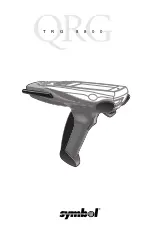
52
•
Color scheme
•
Distance measurement
— Lets you select two points to measure the distance between them.
•
Coloring mode
— Applies colors to points to represent height , intensity or height coloring with
intensity.. Height coloring can be customized in a color scheme editor. Custom color scheme is stored to
the settings file.
•
Resets rotation and distance to original values.
•
Sets predefined inclined view.
2.6 Table and Controller
This chapter describes the tools and procedures required to make measurements.
2.6.1 Measurement Table
The measurement table dimensions are 380 x 270 mm / 14.96 x 10.63 inches. The sample or the fixture should not
extend beyond the table edges. If this is the case, pay special attention not to obstruct the table movement. The total
weight of the sample and the fixture should not exceed 10 kg / 22 lbs.
Accurate measuring is based on completing calibration. Calibration creates precise compensation data to the points
on the calibration path. Therefore, the sample measuring must travel the same path that the calibration has created.
Sample measuring start point, end point, and the points in between them, must be on the predefined path. As the
distance of the scan path is fixed, the sample scanning line location in the X direction is only possible at the same
intervals. If finer adjusting is required, move the sample and/or fixture. You can adjust the single scan line location
in the
Motor Control
area of the user interface.
Table 1: Measurement Area Dimensions
Sensor
Width of the scan line
Measurement work area length
Measurement work area
width
LCI1200
11.26 mm (0.433 in)
220 mm (8.67 in)
LCI1201
11.26 mm (0.433 in)
305 mm (12.0 in)
219 mm (8.63 in)
LCI1600
16.4 mm (0.646 in)
310 mm (12.2 in)
216 mm (8.5 in)
LCI401
4.3 mm (0.169 in)
310 mm (12.2 in)
218 mm (8.60 in)
Tip:
Design the fixtures to enable adjustment in the X direction. The M6 fixing holes in the measurement table
are in a 25 x 25 mm grid.
Figure 62 Measurement Table
















































